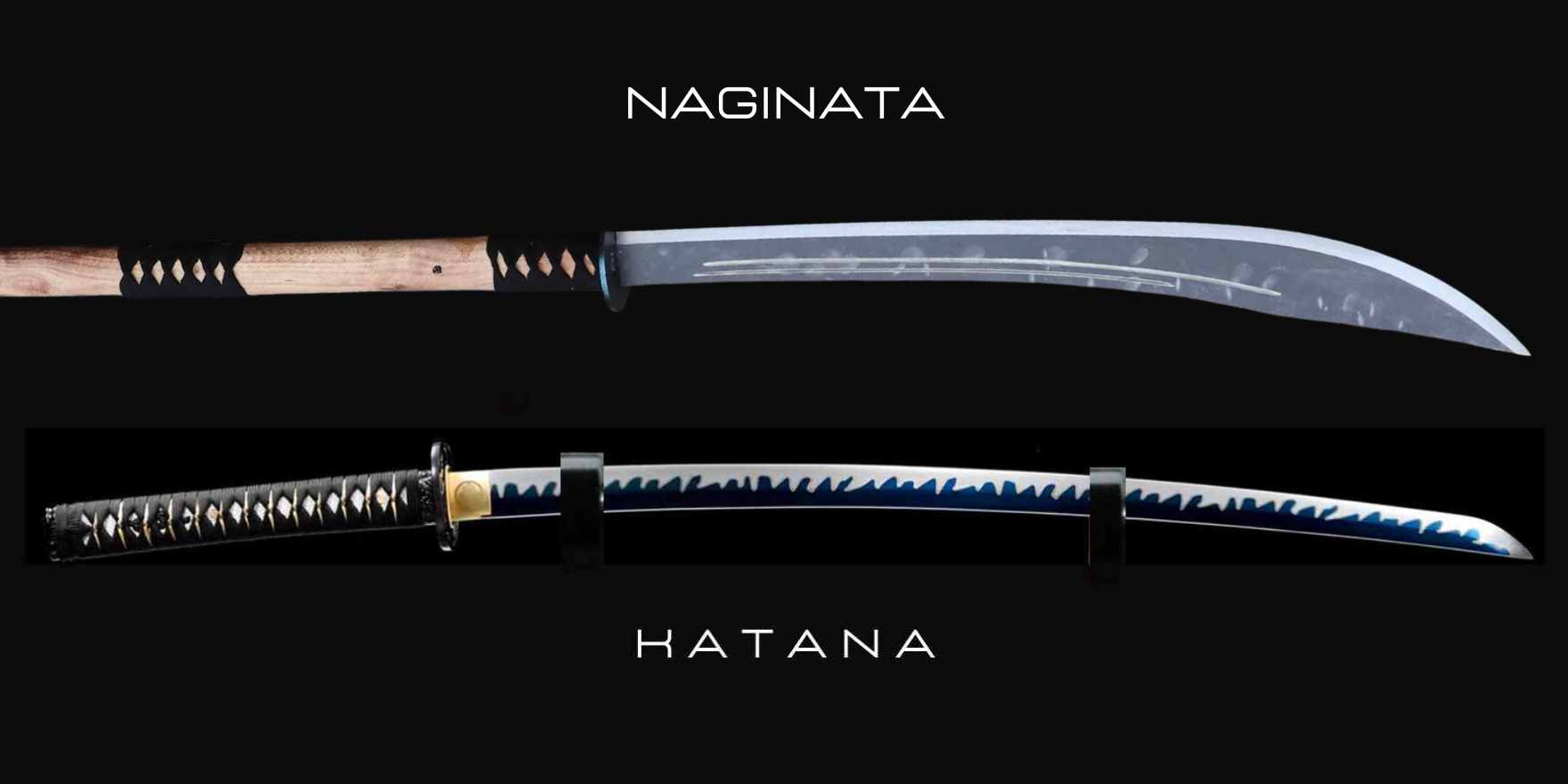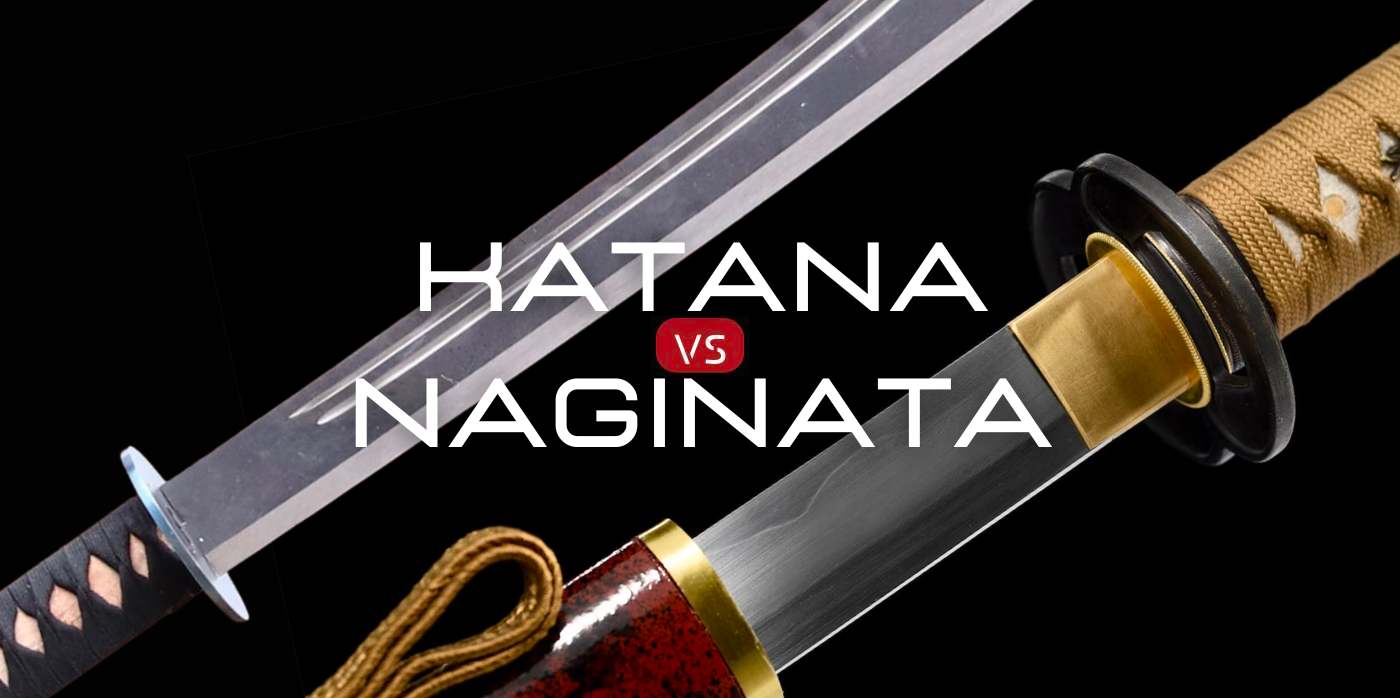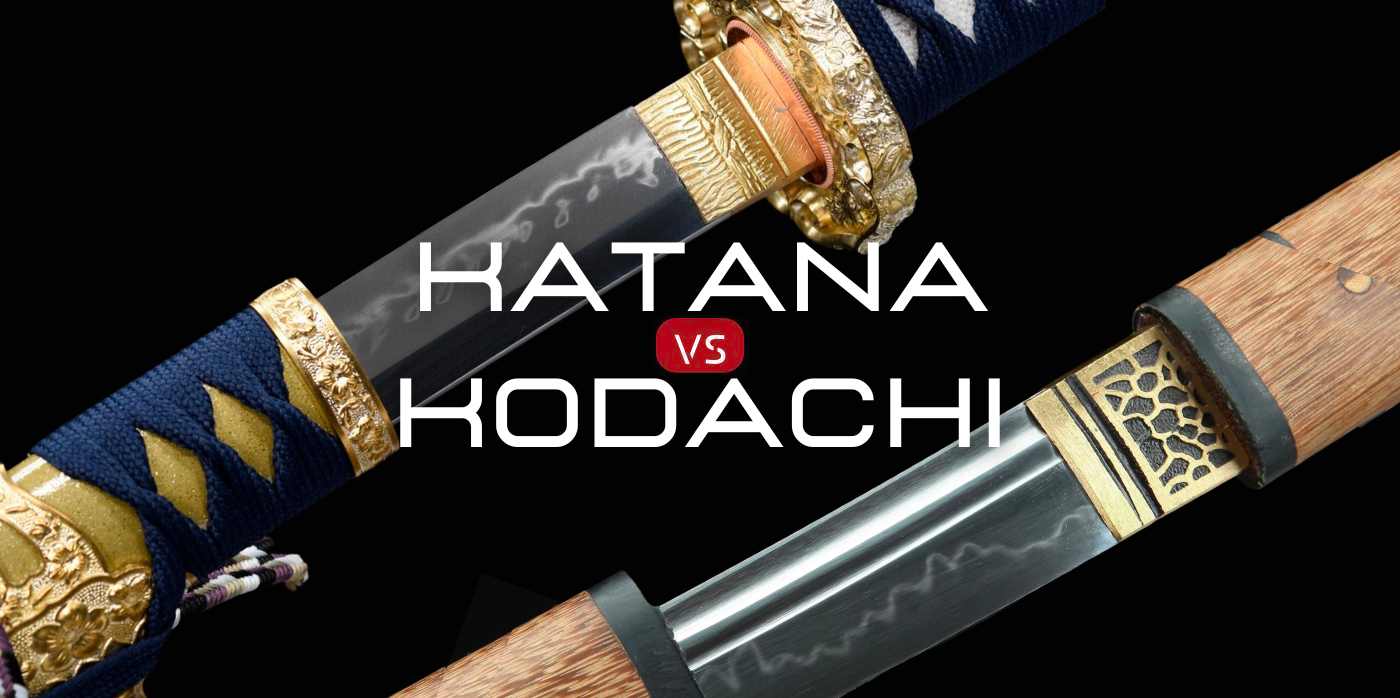What is a Katana
Frequently referred to as the "Soul of the Samurai," the Katana serves as much more than a mere weapon. In feudal Japan, it stood as an emblem of honor, precision, and artistic mastery. The blade's keen sharpness is immortalized in numerous stories celebrating bravery and heroism.
Characteristics of Katana
- Length: A standard Katana measures between 60-80 cm, providing a comfortable reach without compromising on agility.
- Blade: The Katana's blade is uniquely curved, single-edged, and incredibly sharp, designed for swift and clean cuts.
- Usage: Although primarily designed for cutting, its tip is also capable of effective thrusting.
- Craftsmanship: The forging of a Katana is a deeply spiritual and meticulous process, often involving several artisans who specialize in different aspects of its creation.

What is a Naginata
The Naginata, although less glorified in popular media, holds its own aura of mystique and respect. It has been a significant part of Japanese martial arts and has found particular favor among the Onna-Bugeisha, the female warriors of feudal Japan.
Characteristics of Naginata
- Length: The pole can be between 5 to 9 feet long, making it considerably longer than a Katana. The blade at the end usually measures between 1-2 feet.
- Blade: Like the Katana, the blade of a Naginata is also curved and single-edged.
- Usage: It's primarily used for slashing and stabbing, often from a considerable distance.
- Training: Training in the Naginata includes mastering various polearm techniques, including jabs, sweeps, and more intricate maneuvers.

Katana Vs Naginata in Combat
Is naginata better than katana
Determining if the Naginata holds an edge over the Katana—or vice versa—is a nuanced inquiry, as each weapon comes with its distinct set of strengths and weaknesses tailored for particular combat scenarios. Here's a brief rundown for comparison:
Reach
- Katana: Being a close-range weapon, the Katana requires the user to get within arm's length of the opponent.
- Naginata: Thanks to its long pole, the Naginata offers a greater reach than the Katana, making it an ideal weapon for keeping adversaries at arm's length. This attribute of extended range becomes particularly beneficial in scenarios involving cavalry charges or multiple attackers.
Versatility
- Katana: The Katana is versatile in its use, suitable for quick cuts, parries, and thrusts. Its design allows for adaptability in various forms of combat.
- Naginata: While not as versatile, it excels in situations that require reach, like defending against cavalry or multiple attackers.
Effectiveness
- Katana: The cutting efficiency of the Katana is unparalleled, capable of severing limbs and even cutting through armor with a well-placed strike.
- Naginata: Its length makes it incredibly effective for crowd control and for disabling opponents before they get too close.
Skill Level
- Katana: Mastery requires a deep understanding of various martial arts techniques and years of disciplined training.
- Naginata: While easier to start with, mastery of the Naginata is no less challenging, requiring a different skill set focused on reach and angular attacks.
Weight and Balance
The Naginata, being a longer weapon, is generally heavier and may require both hands to wield effectively. A Katana is lighter and can be used one-handed, allowing for a different set of techniques and the use of a secondary weapon or shield.
Naginata Cultural Significance
The cultural fabric of Japan is intricately woven with threads of martial artistry and warrior ethos. The Katana symbolizes the valor of the Samurai, while the Naginata has been more inclusive, finding its way into the hands of female warriors and even monks guarding religious shrines.



